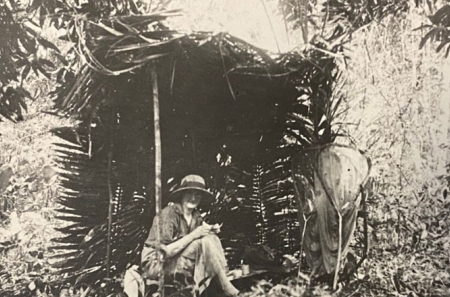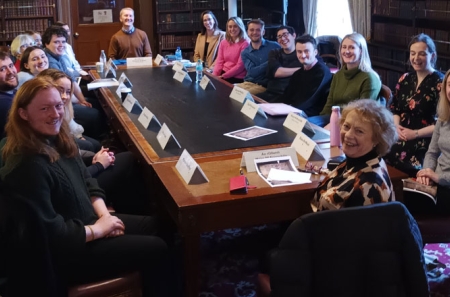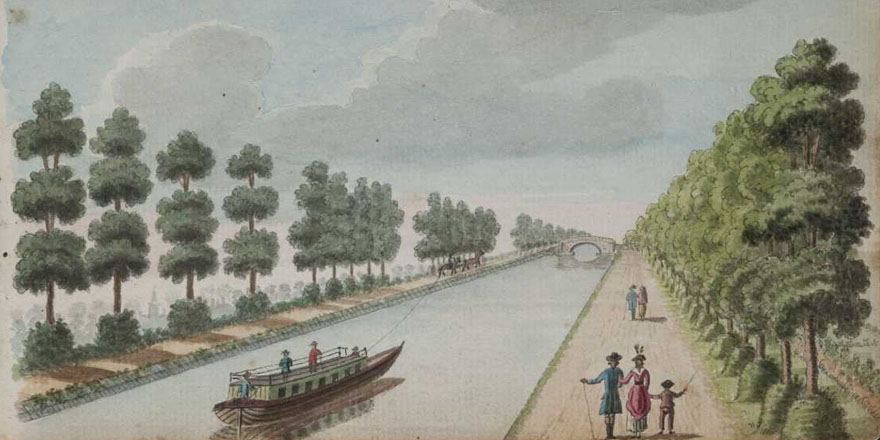
A colourful collaboration
18 November 2020Library Blog post. The Royal Irish Academy Library recently collaborated with The Watercolour World, an online resource of watercolour paintings from before 1900.
The Watercolour World (TWW) is a UK-based charity set up specifically to digitise as many ‘documentary’ watercolours from public and private collections worldwide, some of which have never been accessible to the public until now. The website was launched in 2019 with 80,000 digitised watercolours from public collections including the Rijksmuseum, the British Library, the Metropolitan Museum of Art, the Musée des Beaux-Arts d’Orléans, and the Royal Society of Antiquaries of Ireland. Thousands more images have been added since then, and a quick scroll through the list of contributing institutions reveal The Watercolour World as a truly global project.
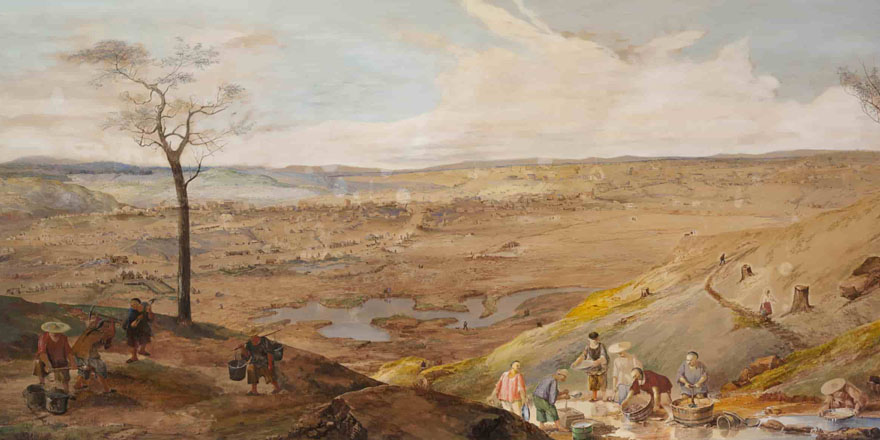
Ballarat, 1858 / by George Rowe. Courtesy of Dixson Galleries, State Library of New South Wales.
Watercolours by their nature, are fragile. They are particularly vulnerable to humidity and light, while excess handling also threatens both paper and pigment. Best practice dictates that most are rarely put on public display. Pre-1900 watercolours offer more than aesthetic value, they provide a unique visual record of life, documenting changes to the world and at times reflecting ways of life that no longer exist. Certainly, it was the artist who documented source material for historians before the arrival of the camera. The Watercolour World founder, Dr Fred Hohler states ‘their mission is to assemble all these images in a more durable and digital form and make them freely available on a single website in a properly indexed, geographical format. Collected in one place, they will create the largest and most important pre photographic record of the world.'
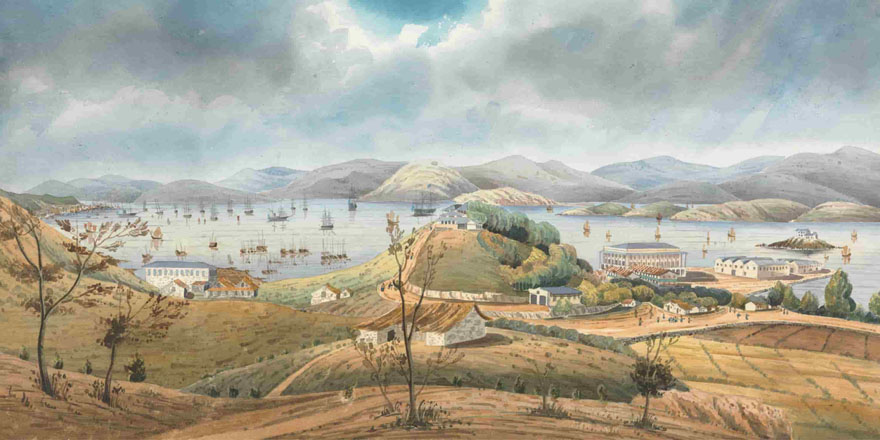
Hong Kong Harbor / by Humphrey John Julian. Courtesy of Yale Center for British Art.
Most of the Academy Library’s collection of c. 8,600 antiquarian sketches and drawings could meet the criteria (time period, medium and documentary value) for inclusion in the TWW project. Among our most notable holdings is a collection of watercolours by artist Gabriel Beranger (c. 1729-1817). These should be of interest to all those concerned with Irish art, architecture, archaeology, and history. Beranger was commissioned by William Burton Conyngham (1733-1796), co-founder of the Hibernian Antiquarian Society (1779 -1783), a forerunner of the Royal Irish Academy, to visit, draw and record ruins of Ireland’s ancient monuments, almost 50 years before the Ordnance Survey began its work in 1824. He painted more eighteenth-century topographical watercolours of Irish antiquities than any other artist of the period.
Beranger’s ‘Rambles thro' the County of Dublin and some others in Ireland’ (RIA MS 3 C 31), a small postcard-size album of 23 watercolours, can now be viewed on the TWW website. These watercolours are copies of Beranger’s originals (since lost) painted on expeditions to Dublin on various dates in the 1770s, Meath in 1775 and Mayo in 1779. He copied the originals into this and sister album RIA MS 3 C 32 sometime between 1780 and 1800. These works are an invaluable record of Ireland and its historic buildings as they were in the late eighteenth and early nineteenth centuries. Their importance cannot be underestimated especially since many of the buildings have deteriorated into ruin, or in some cases, altogether disappeared.
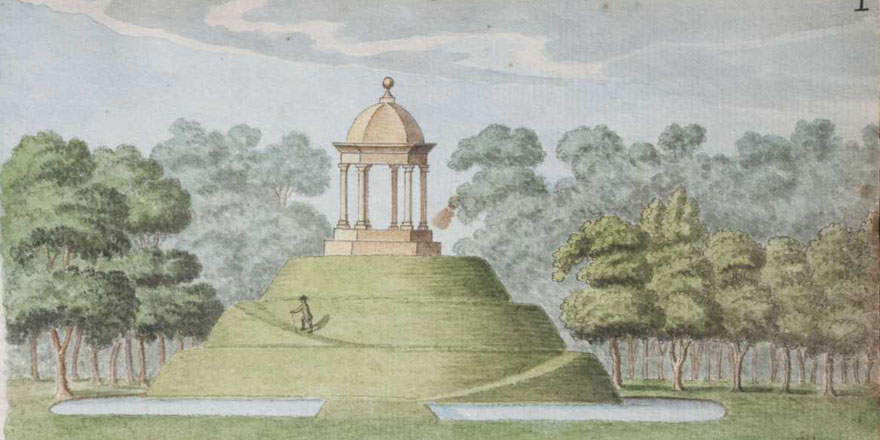
View at Templeogue / by Gabriel Beranger. RIA 3/C/31/1.
While these watercolours had already been digitised and were available to view on the RIA library catalogue and the Digital Repository of Ireland, the potential of this project to share the artworks we preserve and curate with an even greater audience was an opportunity not to be missed. Admittedly, the nature of the project is ambitious - ‘the facility to view, in gallery format, watercolours across multiple collections from the same location created at different times.’ This could take the total number of images into the millions!
So how does it work? The website can be searched by keywords or by map. The search page lets you filter images by geography, collection, artist, category, subject and date range. Images scanned at high resolution allow you to zoom in to look at extraordinary details contained within the paintings. If you choose to search geographically a map pinpoints what and how many images are available from each location, with a useful thumbnail image pop-up to help narrow your search. The digital images on the website have been released to the TWW under a variety of licences which determine how they can be used or published.
Although just a small collection of our watercolours has been uploaded to The Watercolour World since August 2020, analysis of the viewership figures is proving very positive already. Expected hits from Ireland, the UK and the US are joined by views from Chile, Turkey, India, and Japan, to name but a few. Though it is still early days, participation in the project is satisfying our original intention to share our collections with an international audience and perhaps allow people from all over the world to discover the Royal Irish Academy Collections for the first time. In the future, we hope to add more from our watercolour collections.
If you have a moment, take a look at a sample of our Beranger Collection on The Watercolour World and see where it will lead you. Believe me, searching your favourite locations will keep you occupied for hours.
Antoinette Prout
Assistant Librarian

